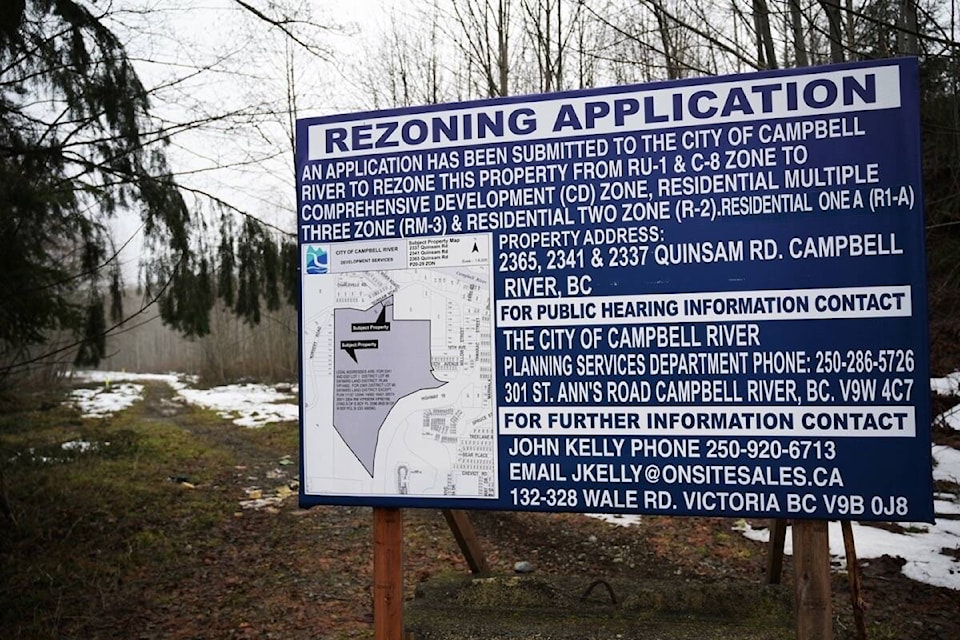A proposed residential development to be located south of Quinsam Road in Campbell River has cleared its first regulatory hurdle with the city.
On Feb. 28, Campbell River city council voted unanimously to pass third reading of a land rezoning bylaw for the development slated to provide the city 350 to 400 new residential units.
RELATED: City council considering rezoning for ‘complex’ Quinsam Road development
City council will vote to adopt the bylaw after a conservation covenant is registered on the project lands and the developer enters a parkland agreement with the city.
City rules require 5 per cent of new subdivisions be park space. As part of this parkland agreement, 3.8 per cent of the property will be parks, with the remaining 1.2 per cent paid cash-in-lieu to the city (equal to 1.2 per cent of the post-zoning property value).
This parkland agreement will also include $50,000 in “seed funding” to Greenways Land Trust as well as a community amenity contribution, yet to be determined.
Coun. Claire Moglove thanked city staff, the developer, and Greenways Land Trust for working together to protect the environmental features of the property as much as possible, while providing Campbell River with housing.
“I think this is an exciting project for Campbell River, and I’m really glad to see it go forward,” said Moglove.
Arguments for and against proposed Quinsam Road development heard at public hearing
Moglove referenced criticisms heard in the public hearing that the development does not follow the tenets of “smart growth,” a suite of planning strategies aimed to maximize environmental, economic, and quality-of-life outcomes.
“If we lived in a perfect world, where we’re starting a city from scratch, it would be easy to have smart growth principles, and just have a city prepared, and there you go,” said Moglove.
“But in a situation like this, I look at what’s the alternative? What is the alternative from having this type of housing, very close to the city? The alternative is sprawl. And sprawl is, in terms of smart growth, in my opinion, significantly worse than what is being proposed.”
Coun. Charlie Cornfield asked whether a part of the development located near a section of West Kingfisher Creek could be moved away from the creek and also voiced support for a stormwater pond to be added to further protect the creek.
Moving that parcel may not be possible because it would then be outside the applicant’s property, but the creek could possible be rerouted, said Ian Buck, the city’s director of development services. Such options will be considered during the development permit review process, but significant design changes would require another public hearing, he added.
Cornfield also asked why the protected environmentally significant areas will stay zoned as rural residential, rather than returned to the Crown or city. This would protect the features, while also ensuring the property owner is not taxed on these areas, he said.
These environmentally significant areas will be protected under the conservation covenant, said city planner Lyndsay MacKenzie.
One of the parks on the property will be considered as a natural asset and managed by the city, but the city’s parks and planning deparments could not take on the maintenance of the other areas, she said. Other options can be discussed with the applicant.
“However, it is my understanding that this is the option that they’d like,” said MacKenzie.
sean.feagan@campbellrivermirror.com
Like us on Facebook and follow us on Twitter
